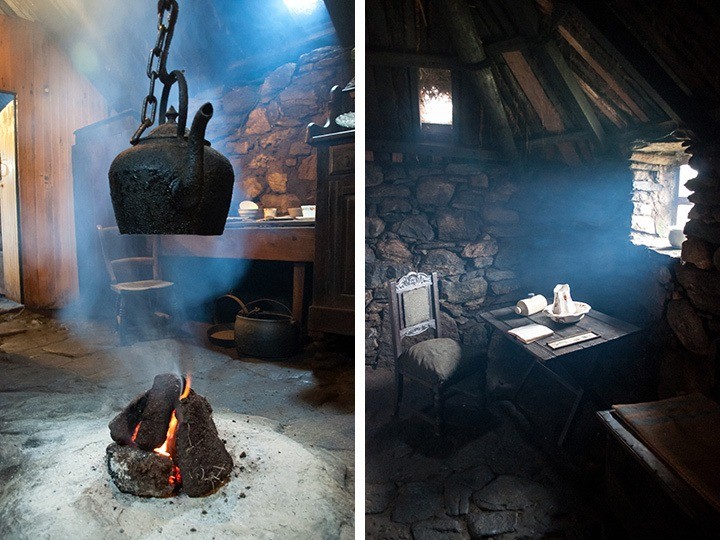When your boiler goes it’s a real pain. It means no hot water or central heating. Luckily for us we can always give an Boiler Repair Gloucester firm like the ones at http://www.hprservicesltd.com/gloucester-boilers/boiler-repair-gloucester/ a call to come and sort it out. But what if a herd of sheep or cows were your central heating and your “boiler” was an open peat fire?
In the Highlands and Islands of Scotland the locals did not have much of a choice with what they could use so they developed and built something called a Blackhouse. These were homes made with natural materials of local stone, thatch and peat soil with any available driftwood that ended up on a beach. There was one section for the humans and the other for the animals kept on the croft which was a basic very small farm holding. This form of home was very ecological in some aspects. They were used up until the late 1960’s. Let’s see how these incredible homes were made.
Blackhouses were standalone units or usually within a grouping of 5 or 6. Building the Blackhouse was a very communal affair as is most things on the Isle of Lewis. It’s the only way to survive as it is a rather harsh environment. The preparing of the Blackhouse would have taken weeks of beach combing. The Isle of Lewis has few trees as they cannot survive in the soil and salty sea wind, but the presence of driftwood was always a given, as ships were wrecked out in the wild Atlantic. Wood was needed to build the framework for the roof for the thatch. If no wood was available, then Whale bone was a good substitute. Lewis was a whaling station and bone was just one of the many uses of a whale carcass.
Whilst some villagers were looking for wood and bone then the other half were preparing the stone walls. This was made with the hard but malleable Lewisian gneiss rock. It is some of the oldest rock in the world and can be easily shaped into blocks or slabs. This would be arranged with a hollow space where the peat soil would be used to fill in the gaps and cavity insulation. Clay was then used to make the structure moisture tight. Over the timber and bone the thatch was placed. This was held down by a rope net with large stones use to secure it. Lewis is a very windy place and the roof could be destroyed in seconds should a storm come in.

Once the house was complete the slices, or creels as they were called, of peat were burnt to line the thatch ceiling with a sticky layer. This pungent coating would seal the Blackhouse from rain. The peat was the source of all heat, wood being hard to come by and if they did it would be used to make the roof. There was an un-turfed bit to allow the smoke to escape. The Blackhouse was finally ready for the crofter to move into.
